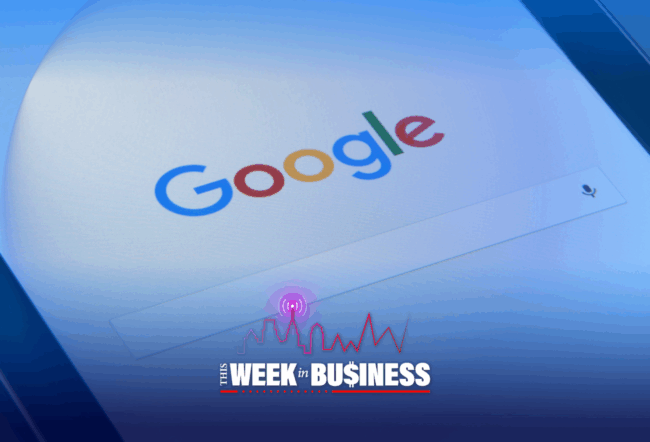The Biden administration’s effort to make student loans affordable with its latest version of an Income-Driven Repayment (IDR) plan will cost the government more than double its estimates, according to a brief published last month by the Penn Wharton Budget Model, a group of economists and data scientists that analyzes the economic and fiscal impacts of public policy. IDR plans, which have been in existence since 1995, peg borrowers’ monthly student loan repayments at a portion of their discretionary income after deducting costs for basic needs such as food and rent.
The U.S. Department of Education had in its latest IDR regulations estimated a net budget impact of $138 billion over the 10-year budget window, assuming a static 33% take-up rate (or enrollment) among student loan borrowers in the new plan. The PWBM brief, however, pegged those costs at between $333 billion and $361 billion, assuming take-up rates of between 70% and 75% in that plan. These estimates do not yet include the effects of students increasing their borrowing, which is subject to future research, the brief noted.
Last August, after the Biden administration announced its student loan forgiveness plan, PWBM had estimated that it would cost nearly $470 billion. That plan covered only existing students, but the latest IDR plan aims to provide repayment relief to new and future students; it is designed to cut in half the amount that borrowers pay on a monthly basis.
The new IDR plan would turn out to be more expensive than the government’s estimates because its attractiveness would encourage students to sign up in much larger numbers than government estimates, according to the PWBM brief. The new IDR plan would be a revision of the existing Revised Pay As You Earn (REPAYE) plan, and it would replace that and other earlier IDR versions.
“[The new IDR plan] would be much more generous and much more simplified and streamlined [than earlier versions].” – Kent Smetters
“[The new IDR plan] would be much more generous and much more simplified and streamlined” than earlier versions, according to Kent Smetters, faculty director of the PWBM, who is also a Wharton professor of business economics and public policy. “Therefore, the signups are probably going to be much larger than with the existing plans,” he said in an interview on the Wharton Business Daily radio show on SiriusXM. (Listen to the full podcast above.) PWBM economist Junlei Chen prepared the brief with guidance from Smetters.
“Our calculations suggest that the vast majority of people – potentially even up to 90% – will be better off just going on this IDR path,” Smetters said. “And that will, of course, increase the cost for the government.” He predicted that “the IDR will effectively become the default” option for student loan borrowers. Unrelated to the IDR plan, the Biden administration has extended a pandemic-era pause on student loan repayments pending legal challenges around it; it could extend until June 2023.
The PWBM brief highlighted the major changes in the new IDR plan:
- Increase the amount of income exempted from the calculation of the borrower’s payment amount from 150% of the applicable poverty guideline to 225% of the applicable poverty guideline. (Monthly payments would be zero for a single borrower with annual income of less than $30,500, and for a borrower in a household of four with income below $62,400, according to a New York Times report.)
- Lower the share of a borrower’s discretionary income that must be applied toward monthly payments. Borrowers with only outstanding loans for an undergraduate program will pay 5% of discretionary income, while that threshold will be between 5% and 10% for those with loans for both undergraduate and graduate programs.
- For borrowers with an original loan principal balance below $12,000, the remaining loan balance would be forgiven after 10 years. Every additional $1,000 would add a year of payments, up to a total of 20–25 years, after which the balance would be forgiven.
- As long as borrowers are making payments on time, any unpaid interest component will not be added to their outstanding balance.
- Borrowers who are 75 days or more past due on their loan payments will be automatically enrolled into the IDR plan that requires the lowest monthly payment.
- Borrowers who are late with payments won’t have to reapply or get their income re-certified; the DOE will use tax data from the IRS to determine a revised monthly payment amount.
“College is one of life’s reset buttons. It gives people another shot.” – Kent Smetters
‘A Really Good Deal for Borrowing’
“A lot of students should re-optimize and take out more loans for college because this is now a really good deal for borrowing,” Smetters continued. “In fact, even if you could work that summer job, even if you could accumulate that 529 plan and maybe [raise funds] through your parents or grandparents, it’s probably not optimal for a lot of students going forward to do that.” (A 529 plan is a tax-advantaged plan to encourage saving for higher education).
Smetters said he also expected to see larger loan sizes. As of now, only about 31% of the actual loan capacity that this program would cover is being utilized, he added. Roughly 8.5 million federal student loan borrowers are enrolled in existing plans, representing about a third of all borrowers in repayment, according to a New York Times report. About 45 million students have borrowed a combined $1.6 trillion in federal loans at last count, according to a White House statement.
Colleges may also be encouraged to increase tuition prices, Smetters said. The Ivy League colleges or even top 100–150 schools that face relatively less competition than others “have a lot more leverage here” to raise tuition fees, he added. “They will say, ‘Hey, this is cheaper for you.’ We already see certain colleges optimize heavily around the existing IDR programs.”
Smetters agreed that making college loan repayments more affordable will also open the door to more people being able to go to college without having to worry too much about unpaid student debt. “College is one of life’s reset buttons. It gives people another shot,” he said. “But ultimately, someone has to pay for this. It’s certainly not a free lunch.”


